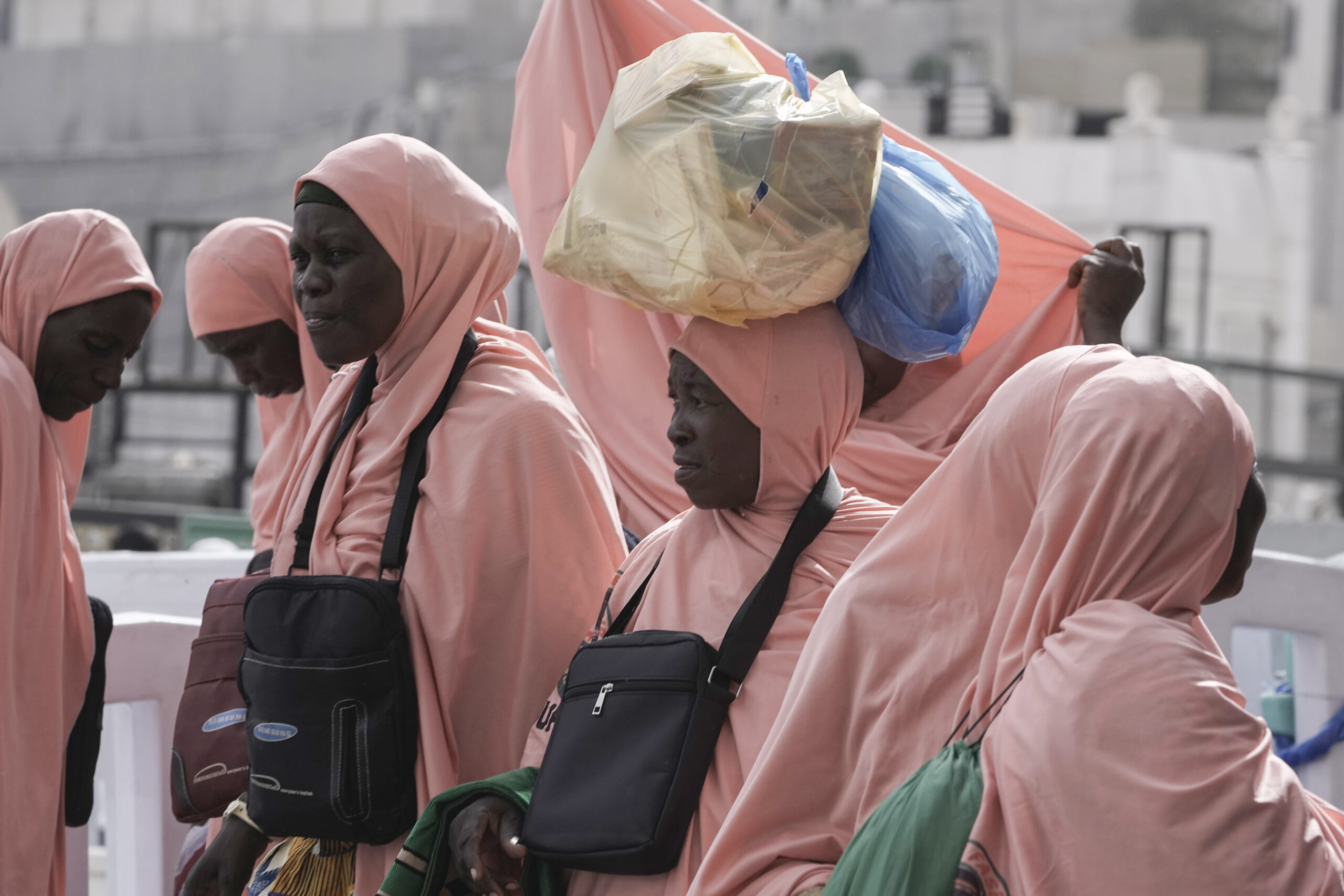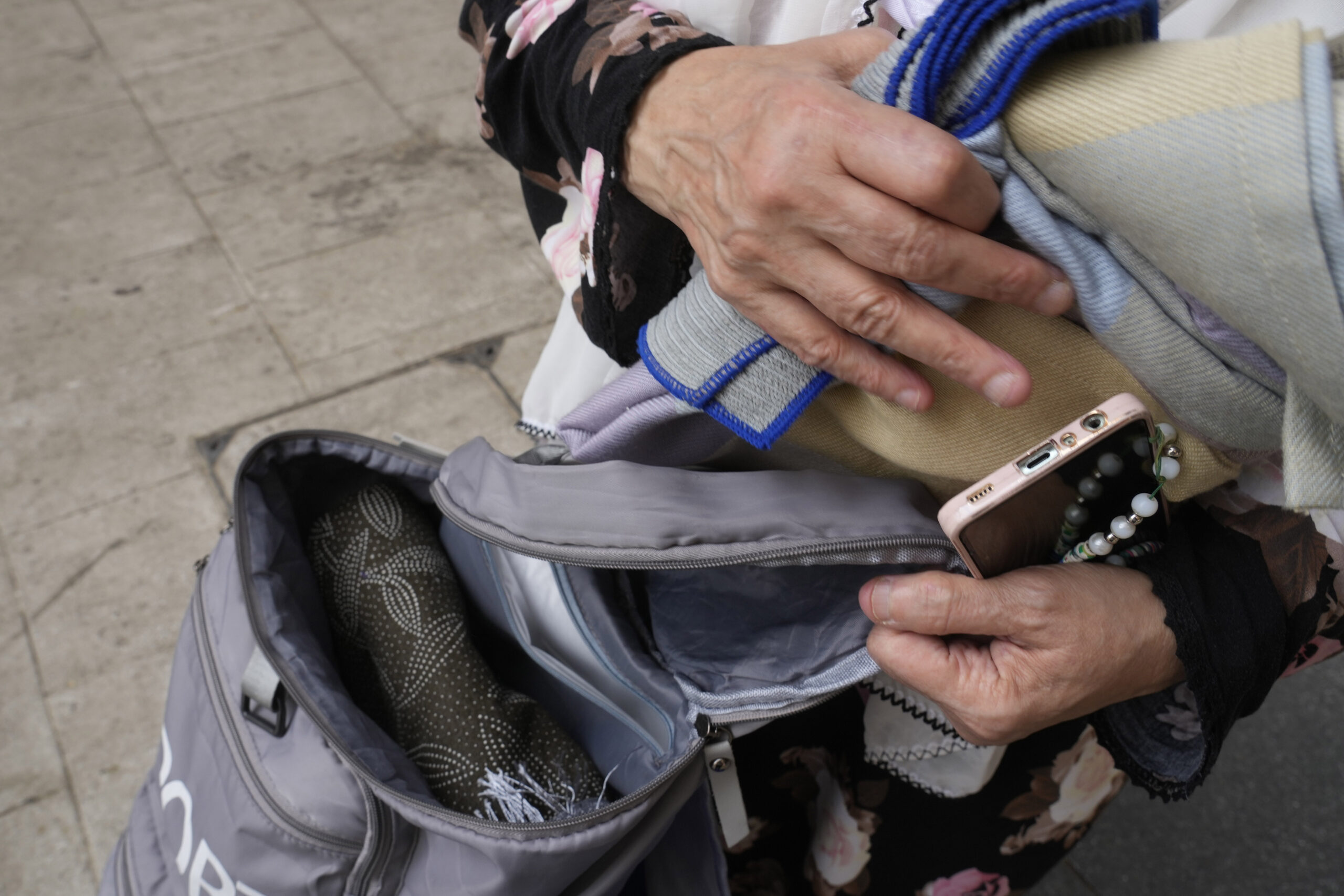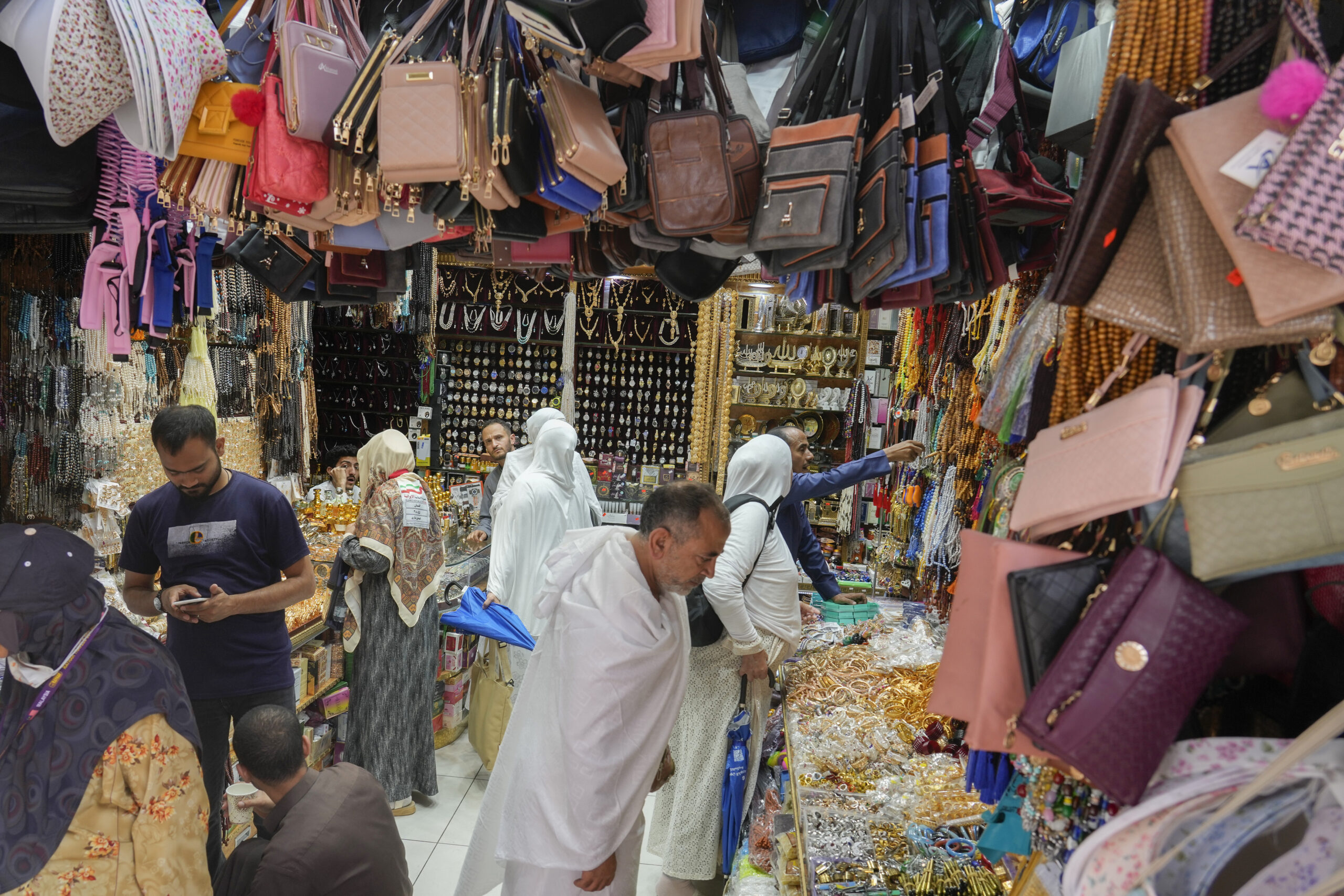MAKKAH, SAUDI ARABIA (AP) – Straw hats, cross-body bags, and collapsible chairs: These are just some of the essentials Muslims bring to the haj pilgrimage.
Spiritually, the five-day haj is awe-inspiring for the faithful, an experience they say brings them closer to Allah the Almighty and to the entire Muslim world.
Physically, it’s gruelling. Pilgrims walk outdoors for hours in broiling heat around holy sites in Makkah and the surrounding desert. They are caught in unimaginable and overwhelming crowds, trying to get to the same place. Barriers directing the traffic mean that if you miss your turn, you might walk hours more to get where you want to be.
So the over two million pilgrims don’t just learn the complicated rules of how to properly perform the rituals, which began yesterday. They also pick up helpful hints and tricks of the trade to get by, learned from other hajis – as those who completed the pilgrimage are known.
Here’s a look at what they say is essential gear.

WHAT TO WEAR
Dress for the heat, since daytime temperatures regularly soar past 40 degrees Celsius. The majority of rituals take place outdoors in the desert, including climbing the Mount Arafat and stoning the Jamarat, a row of pillars representing the devil.
Sun hats are key. Pilgrims often opt for wide-brimmed straw hats or even cowboy hats. Umbrellas of every colour are everywhere. Some balance their prayer mats on their heads or the canopies from umbrellas.
Men are required to wear simple white robes without any stitching, a rule aimed at uniting rich and poor. Women must forego beauty products and cover their hair but have more latitude to wear fabrics from their native countries, resulting in a colourful display of Islam’s multiculturalism.
When it comes to footwear, it’s best to wear something that’s durable for the long walks but that also slips on and off easily, as pilgrims must remove their shoes before entering Makkah’s Grand Mosque.
Sandals are sensible, but some pilgrims say it’s best also to wear socks as the mosque’s marble floor can be surprisingly cold as they walk around the Kaabah seven times.
WHAT TO CARRY
A daypack of some kind is essential for carrying food, water, sunscreen and other sundries. But backpacks can be a hassle when you’re crammed shoulder-to-shoulder.

Far more popular are cross-body bags that you can access without turning around.
Many pilgrims also carry a separate drawstring bag or pouch for their shoes. Usually at mosques, you can leave your shoes with an attendant at the entrance, but with hundreds of thousands at the Grand Mosque, that’s a sure way to lose your shoes, or at best waste a long time getting them back. It would also mean you have to exit the same way you entered, not always possible when the crowd takes you in another direction.
Umaima Hafez, a five-time hajah from Egypt, packs like a pro.
Sitting on her portable plastic stool, she reaches into her large pack and pulls out a blanket, homemade granola and crackers, a travel towel that she wets and places on her head when it gets hot, an extra-thick prayer mat – for her knees – and some medications. The stool fits into the bag as well. She’ll carry it throughout Haj, then leave it behind for someone else to use.
She insists her bag isn’t heavy. “Everything is beautiful and easy with Allah the Almighty… And people give out a lot of water and food here.”
Hassan Hussain, a 24-year-old first-time pilgrim from Britain, also went for a maximal approach. His bag holds his phone, charging cable, power bank, sunglasses, water bottle, British and Saudi currency, bank cards, his shoe bag, a prayer mat and hydrating facial mist.
He said his sister, who did the haj last year, told him what to bring.
His advice to other pilgrims is to overpack.
“You don’t know when you’re going to need things,” he said. “The person next to you might need things. Just take everything and work it out as you go along.”
In contrast, Ali Ibn Mousa, a 30-year-old Russian and father of seven, is going for manoeuverability and speed, so he stays light.
His drawstring bag holds only his phone and his pilgrim ID. He’s more interested in what he will bring back from the haj.
“If I had a heavy bag, I wouldn’t be able to do some of the things I want to,” he said. “That’s why I take a small bag that is easy to carry, so I can run inside” while circling the Kaabah.

CAMPOUT CHECKLIST
The giant flows of pilgrims move back and forth between holy sites spread out over a length of over 16 kilometres from the Grand Mosque to Mount Arafat, out in the desert. Even within a single ritual site, it can take much of the day to walk from one end to another, like Mina, where pilgrims will stay in one of the world’s largest tent camps and stone the pillars representing the devil.
A pilgrim has to be prepared to be stuck in a spot outside for ages, waiting for a transport to arrive or a crowd to clear, sometimes in the middle of the night.
Ikram Mohammed’s supermarket in Makkah sells camping essentials such as lightweight tents, sleeping mats and collapsible water pouches.
“They buy dried fruit and nuts, biscuits, chips. Anything they can consume easily while they are on the move that doesn’t need refrigeration or utensils,” Mohammed said. A special section specialises in fragrance-free toiletries, in keeping with the prohibition on perfume.
Mohammed also sells souvenirs for pilgrims to take back home with them, everything from chocolate and sweets to water from the sacred Zamzam well near the Kaabah.
Another popular item: Pain relief cream for achy joints.






